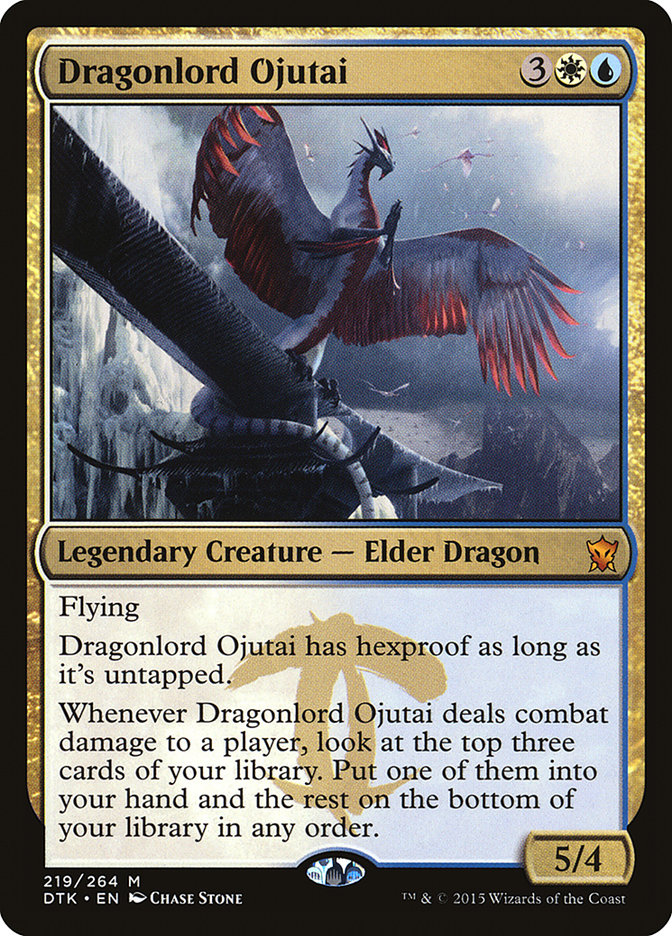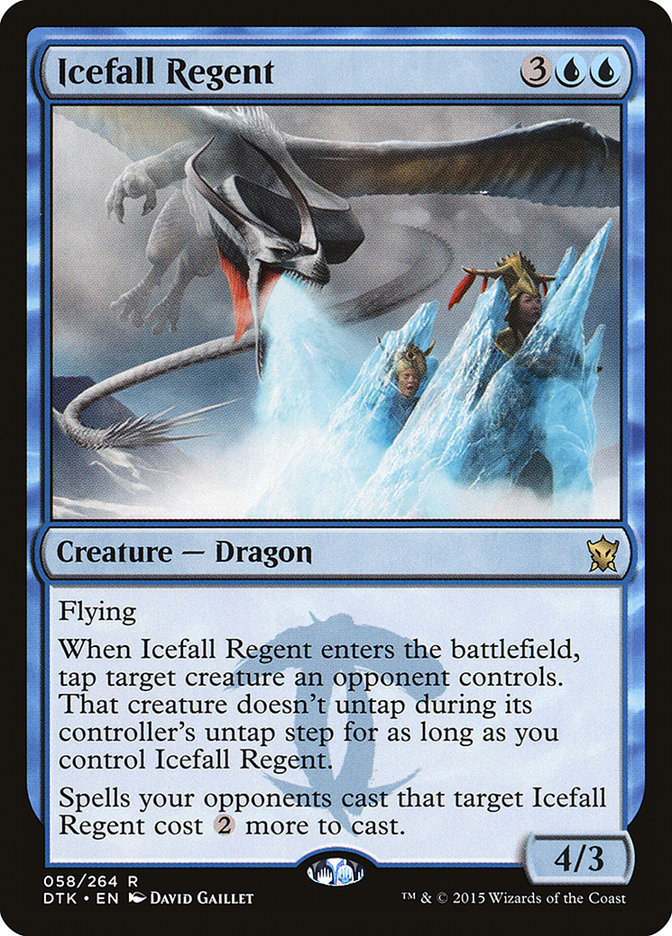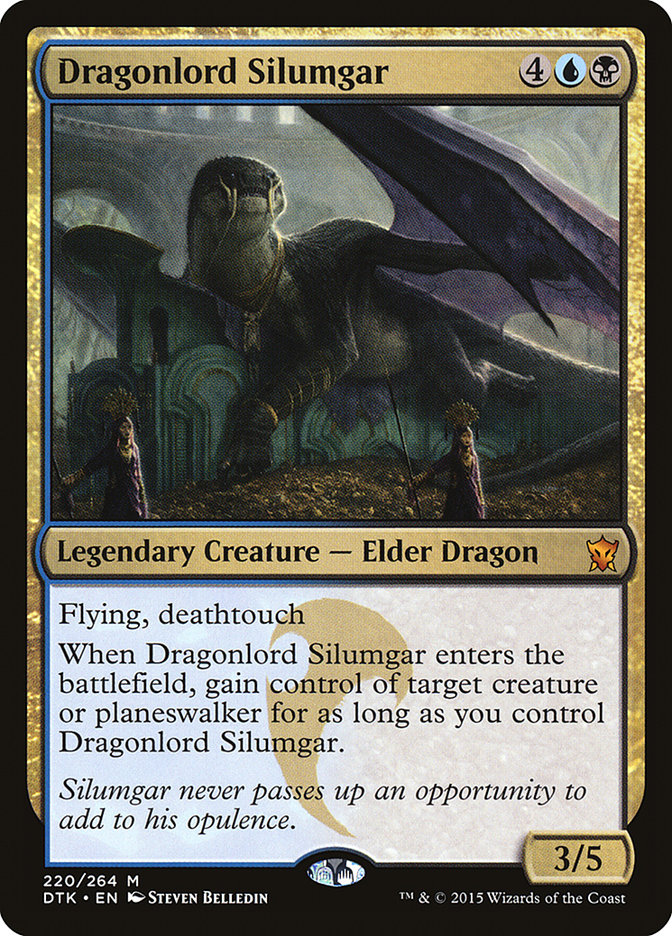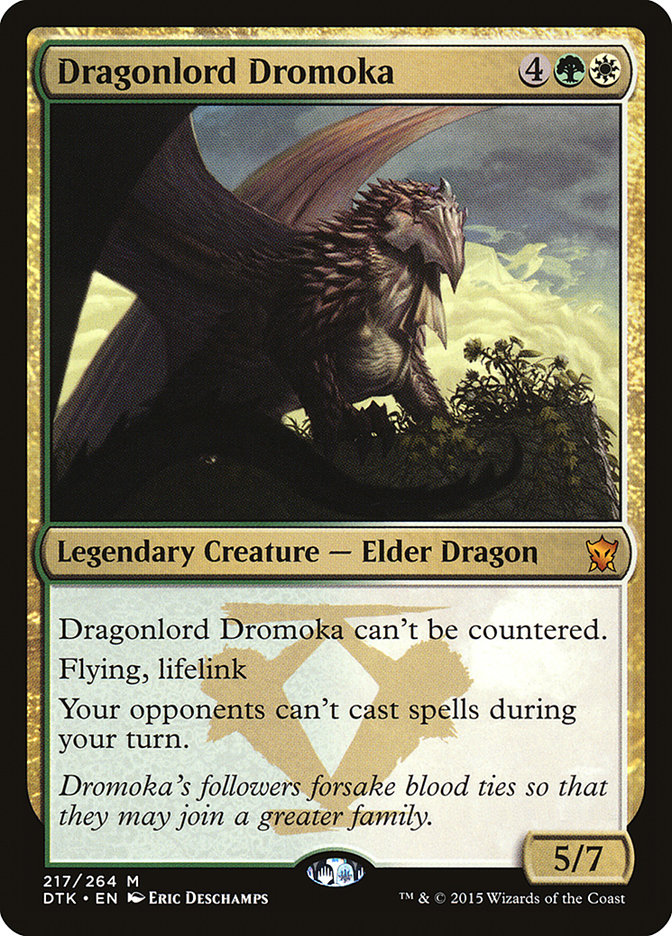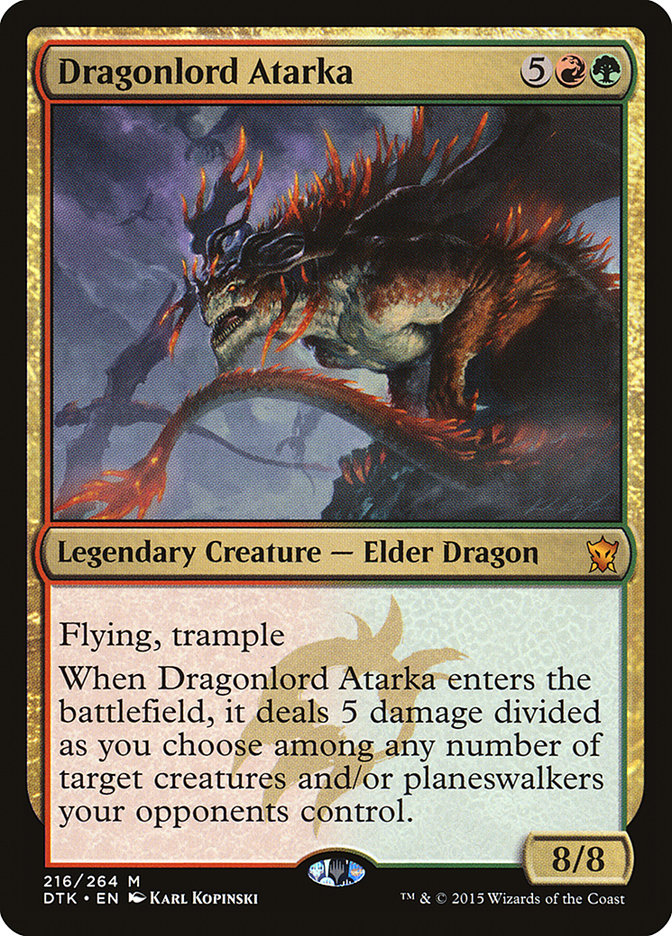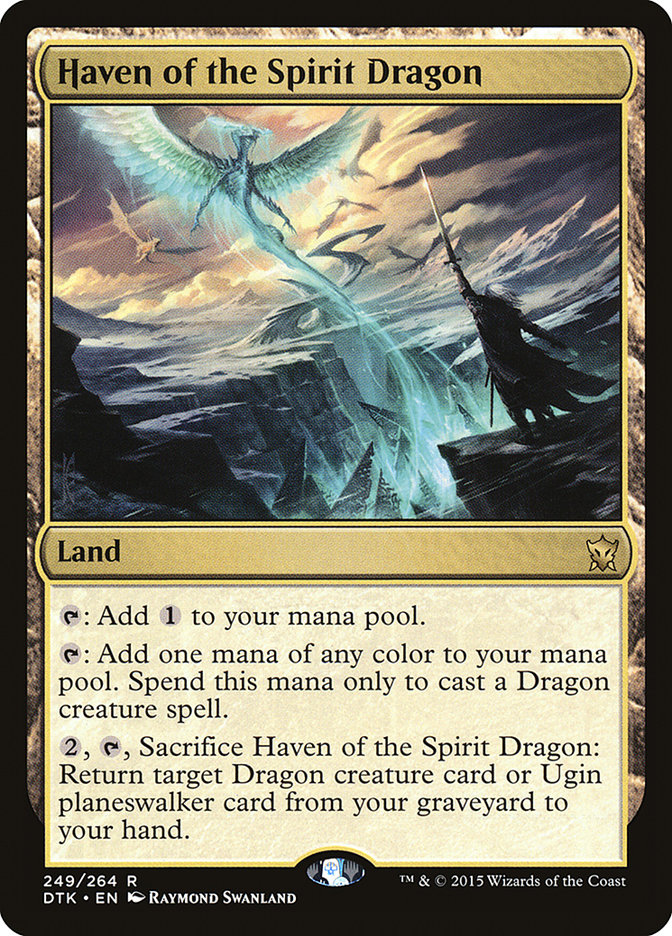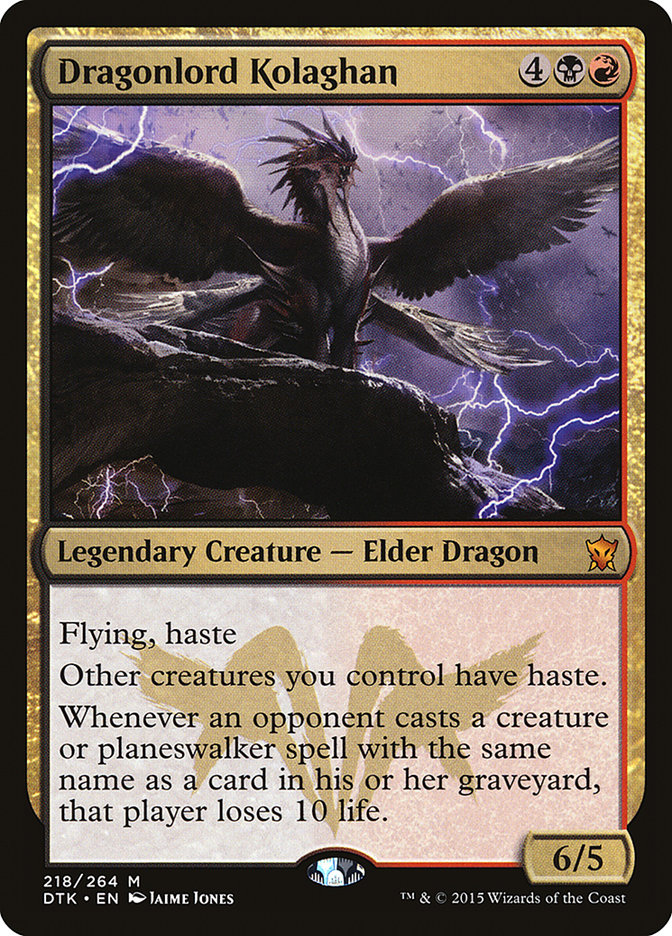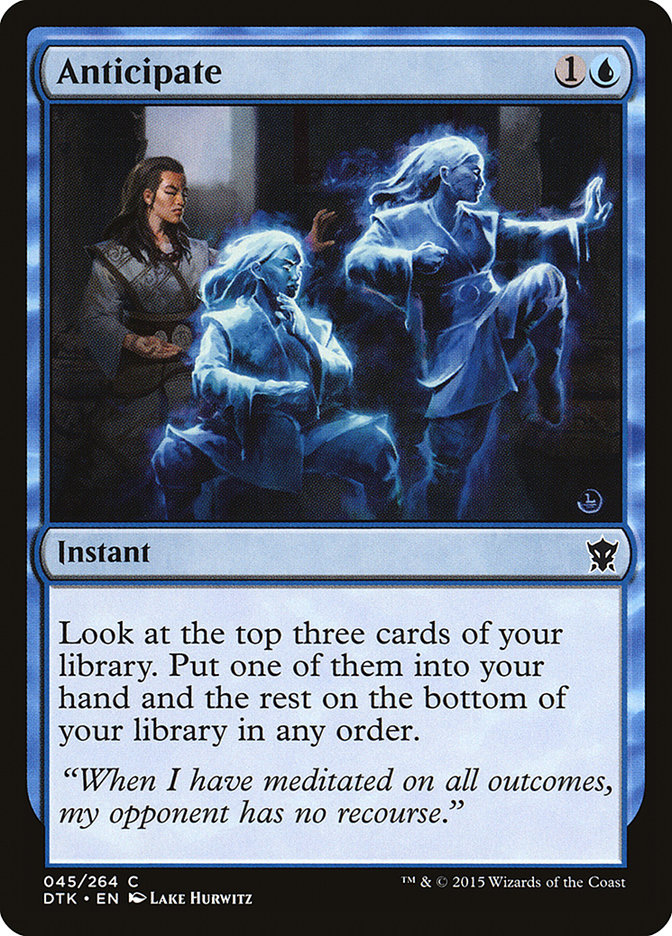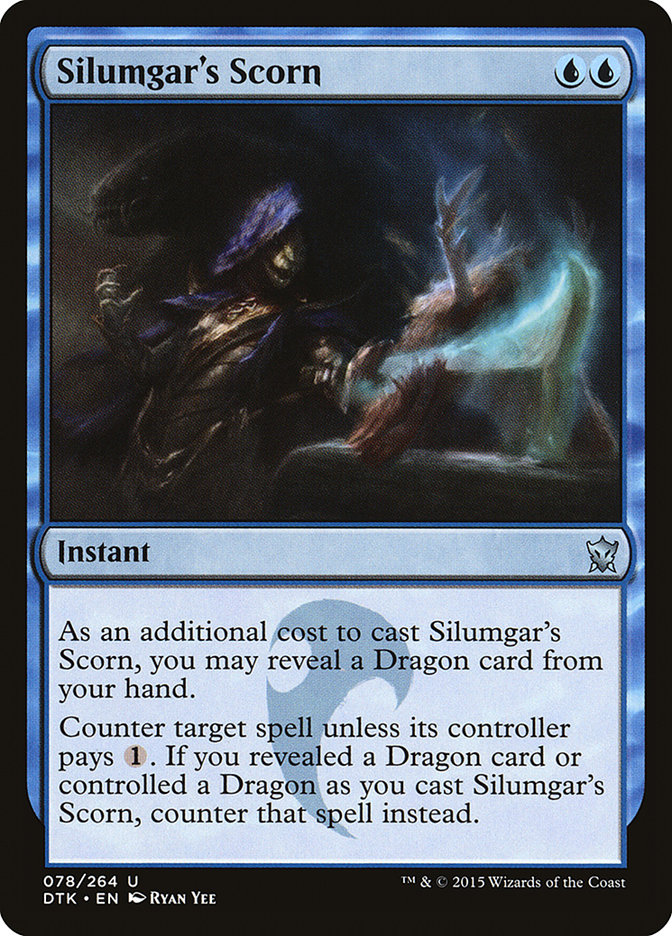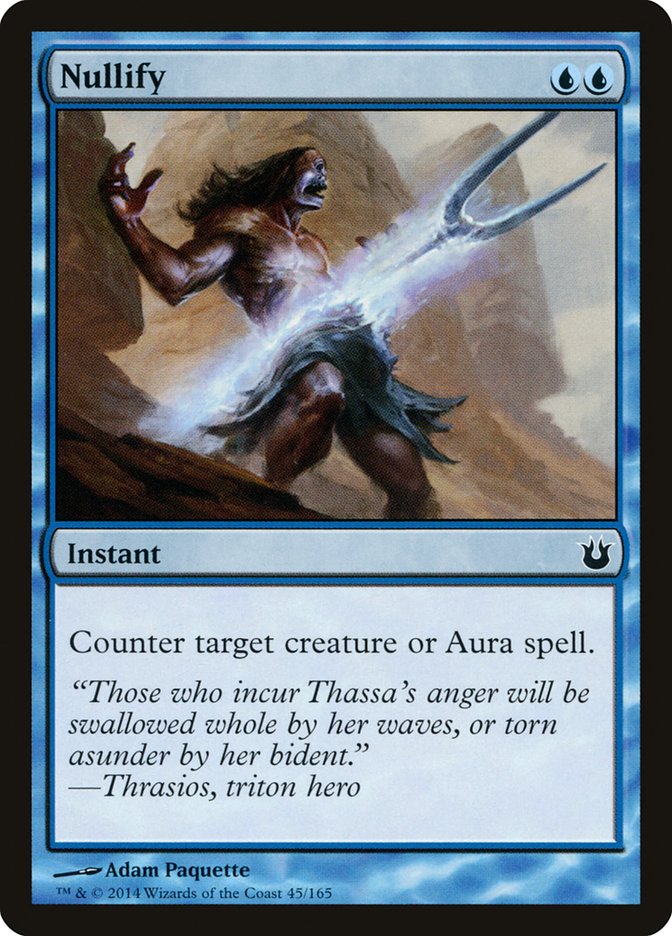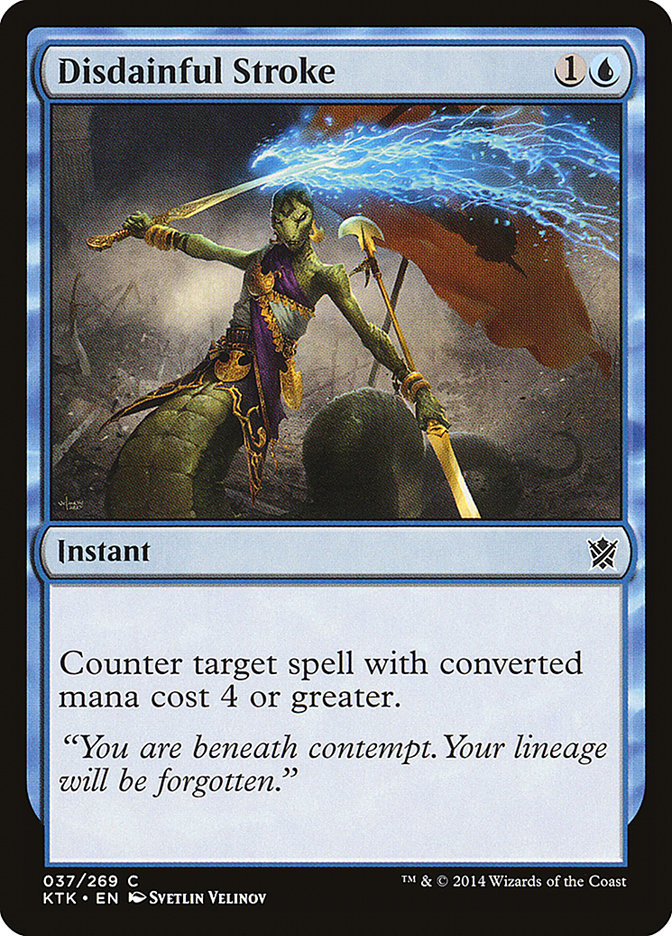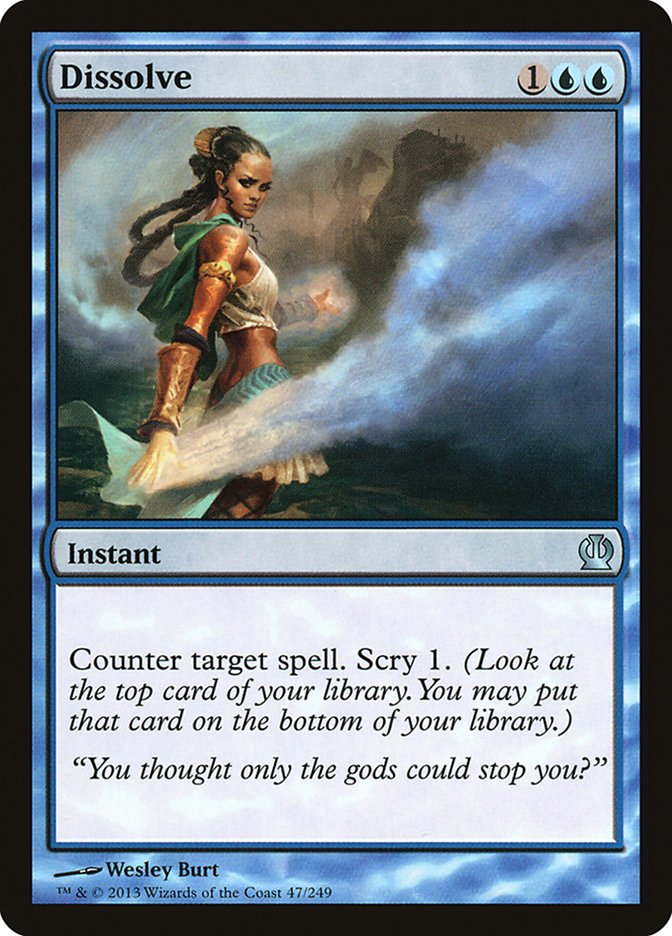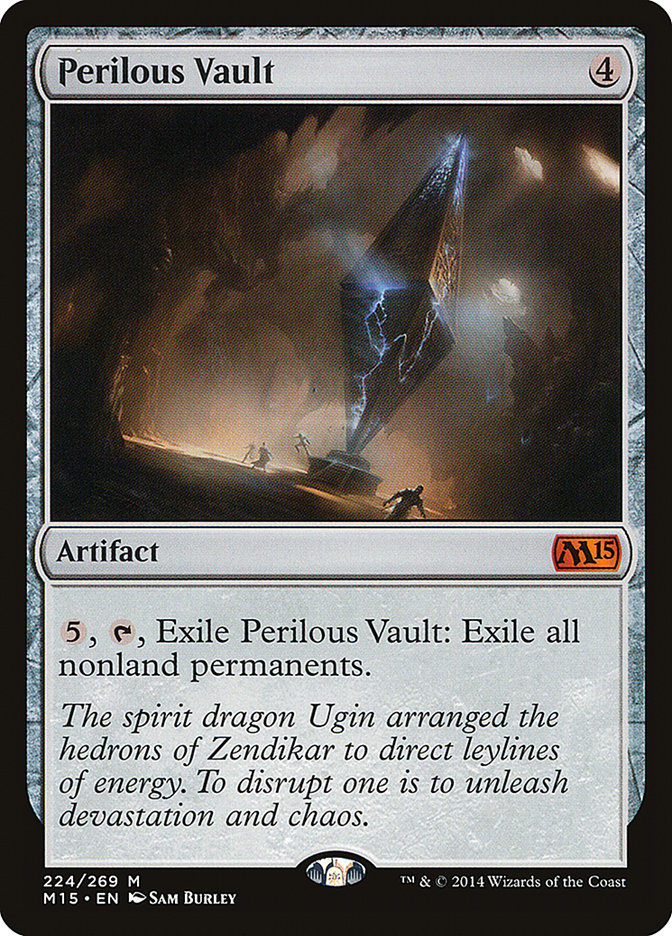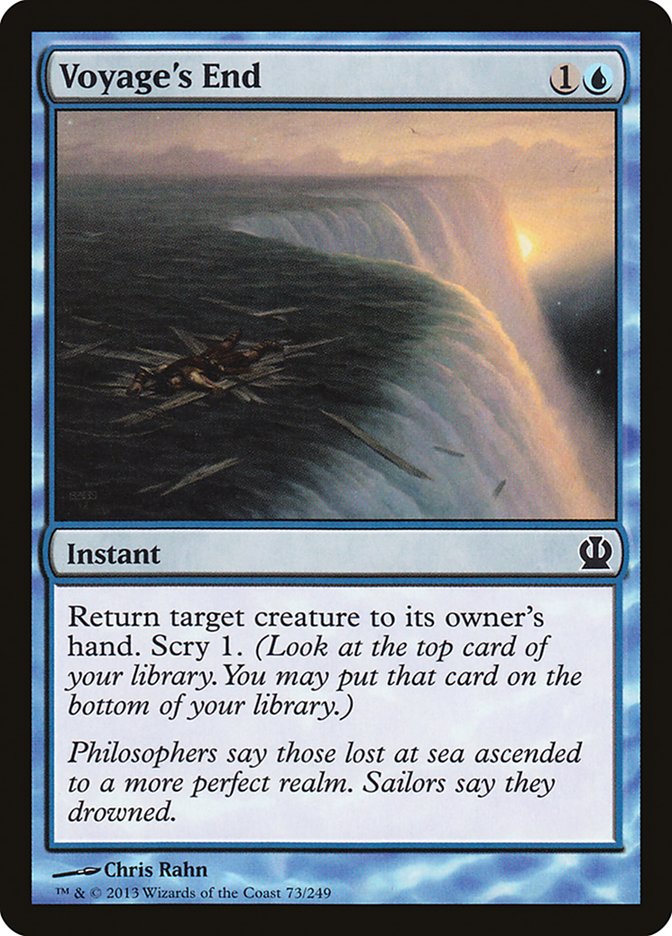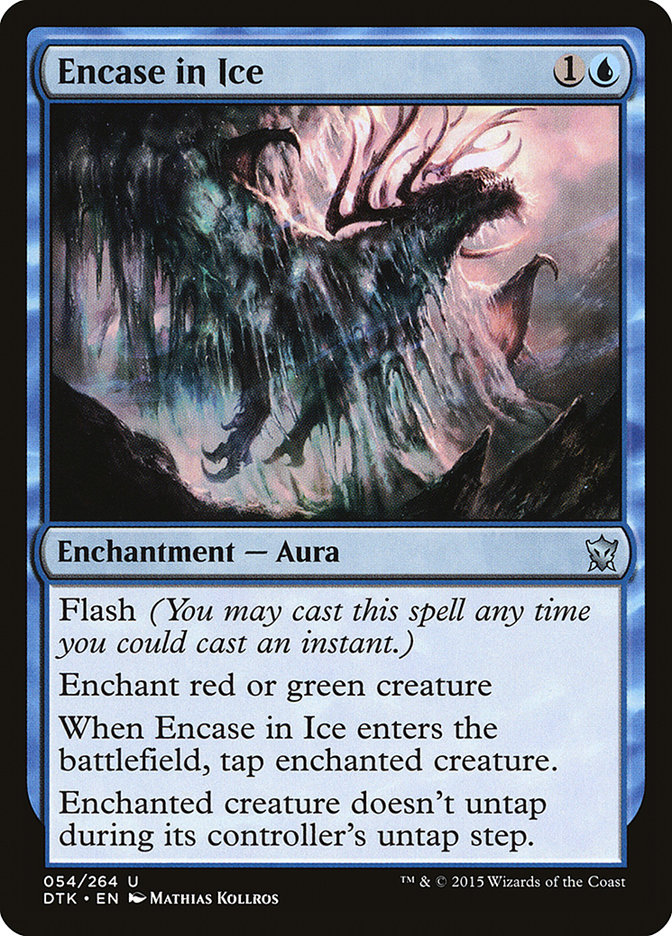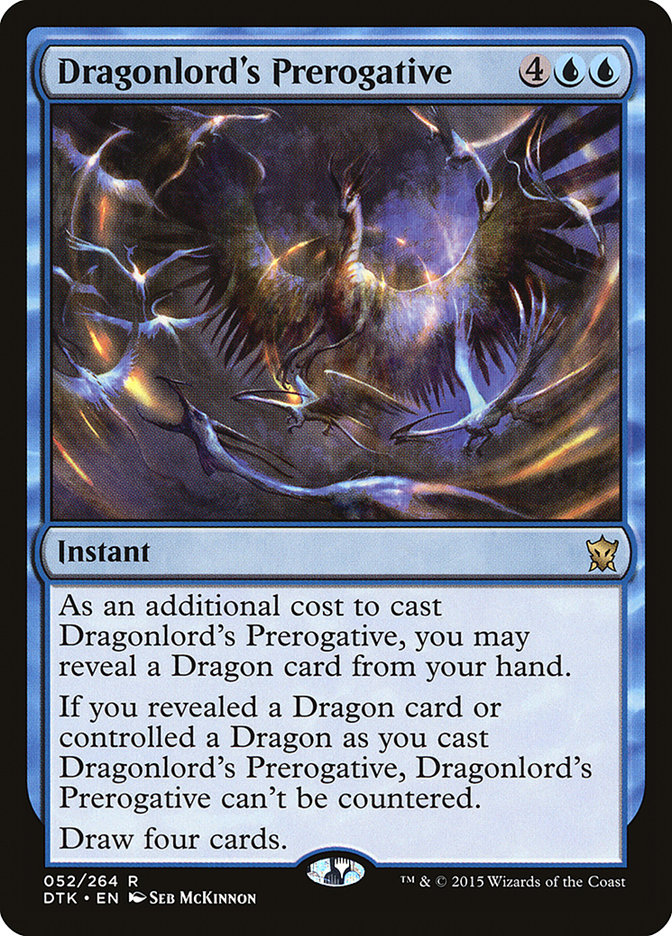Michael Flores won a PTQ this weekend with a powerful new strategy that takes some of the elements of the Esper Dragons deck to the extreme.
Five-Color Blue Dragons is a mono-blue deck that is basically all counterspells and card draw that splashes all of the other colors for Dragons. It has a
great Esper matchup and is going to have a big impact on the decks people play at GP Toronto and SCG Portland this weekend.
The formula is a return to the classic Michael J. Flores approach of just using counterspells to buy you time to start dropping Dragonlords, and then not
worrying about removing threats because most things opponents can do are just not as good as casting the five Dragonlords:
Sorry, Kolaghan, Icefall Regent costs less and fits into our strategy better!
The key to Five-Color Blue Dragons is that the deck is basically a two-color deck: blue and Dragons, and the use of the Dragon lands gives the deck an
extremely potent way to utterly dominate control mirrors.
-10 “dual” lands
-9 blue lands
-8 Dragon lands
While the Dragon lands give you the ability to splash a bunch of really powerful gold cards into a mono-blue deck, their real power comes from the utility
they bring. Haven of the Spirit Dragon has already been a widely adopted support card for Dragon decks, letting you trade a land for a powerful threat when
you eventually have plenty of mana. Having protection against Thoughtseize, or just flooding out in general, well, it’s awesome.
The really exciting breakthrough card, however, is Crucible of the Spirit Dragon. Crucible of the Spirit Dragon is a charge land that only charges up for
Dragons. Fortunately, most of the best cards, which are also the expensive ones you’d want to use a charge land on, are Dragons. What makes Crucible so
devastating in the Dragon-control semi-mirrors is that when you are both just sitting there doing nothing, the person with the Crucible builds up another
mana every turn, pushing the game inevitably closer to a crucial turn in which the player with the Crucible can generate a large amount of mana in
the same turn and do whatever they want. How are you supposed to ultimate a planeswalker when they can just cast Dragonlord Dromoka and Dragonlord
Silumgar in the same turn…?
The ability to cast incredible threats by tapping only a single mana is an attack on an axis that Esper (as currently configured) just does not have the
tools to interact with. The mana advantage is absolutely backbreaking.
Before getting too much further into this strategy, let’s take a look at the actual list Flores used to win a Pro Tour slot at his PTQ, this weekend:
Creatures (10)
Planeswalkers (1)
Lands (27)
Spells (22)

Let’s start with the mix of Dragons, because that’s one of the most stark differences between Flores’s list and decks like Esper Dragons. It’s not just
that he has so many different Dragons; he also has such an overwhelming quantity of each.
Dragonlord Ojutai is the top dog. All of the Dragonlords are powerful, but this one is just a slight bit better than the others because of it costing five.
There are so many amazing options for six, seven, and eight mana, but you can only play so many super expensive cards, even if you have Crucible to power
them out.
Dragonlord Ojutai fits so perfectly into a tapout counterspell deck because you can play it with no mana to protect it, then untap and use the Silumgar’s
Scorn and/or Dissolve in hand to force it to connect. Even better, though, you don’t have to attack. If you play Ojutai and your opponent has two Hero’s
Downfalls in hand, what are they going to do? Leave six mana open and pass the turn? Fine, then just hang out. Draw your card, hit your land drop, charge
your Crucible. The lategame typically favors the player with ten Dragons, tons of ways to get them, more counterspells, and charge lands.
So, why only three Ojutai and two Icefall Regents, then? That Ojutai is a legend is part of it, but you get diminishing returns anyway. It’s not that the
second Ojutai wouldn’t make the first that much better. It does give you many options to have a second copy in your hand. If you are getting beat down by a
Siege Rhino, it can be much better to have one Icefall Regent and one Dragonlord Ojutai, than to have two copies of Ojutai.
Icefall Regent is definitely a card that gets sideboarded out sometimes, which is fine. It’s not the best versus control or tokens, but the strength it
brings against big creatures like Stormbreath Dragon or Siege Rhino is a valuable option to have. That opponents will often waste three mana they were
holding up and then five more to actually solve the problem can be a bigger tempo advantage than one might assume.
Your opponent playing Abzan was forced to pass on your end step then kill the Regent on their turn, using all five of their mana, so that the Siege Rhino
could potentially untap next turn. If they let you untap, you could use a counterspell to “Time Walk” them. Of course, now they are down a removal spell.
Now, you literally steal their Rhino, not just lock it down. What a beating, right? They can’t even use Elspeth to try to get out of it, either. How many
removal spells do they have?
Okay, maybe they have another removal spell, costing a lot of another turn, plus they missed another attack.
Okay, so now the Rhino is dead regardless of whether they have removal or not. And if they don’t, well Atarka is an 8/8.
Wait, so why are there three copies of Dromoka? When did that become a Dragon worth playing?
Why would it not be? It’s like a Baneslayer Angel for a mana more that has two extra points of toughness. Of course, it’s also uncounterable and locks your
opponents out on your turn. Obviously it’s sweet to have uncounterable spells when opponents are playing seven counterspells, but is that really that big
of a deal?
Flores had to face Esper in the finals of his PTQ, which is a great matchup for Five-Color Blue Dragons. On a key turn, the Esper player played an Ugin
with counterspell backup. Flores calmly untapped, removed his charge counters to play Dragonlord Dromoka, then tapped his other lands to cast Dragonlord
Silumgar. The tactical implications of Dragonlord Silumgar are actually pretty important, and the second copy really should have been in the maindeck.
Flores was initially super excited about Silumgar’s ability scaling for every Dragon you have, which is sweet, no question, but young Silumgar is just not
as powerful as the full-grown Dragonlords. It’s a fine card, but you are paying for the hexproof. The Drifting Death is for people that want all of their
Dragons to be hexproof. Once you have Dragonlord Dromoka and company, well, that ship has sailed.
Ugin, the Spirit Dragon is a very powerful Magic card, no question. However, despite being retrievable by Haven of the Spirit Dragon, it can’t be cast with
Crucible. This is a much bigger handicap than may appear on the surface. Besides, the more Dragonlords you have, the better the rest are since your
opponents will run out of removal eventually. Moving forward, Flores wants to cut the Ugin for Atarka (which an extremely handsome man may have suggested
on Friday).
Flores initially had a Kolaghan in the sideboard, which is certainly not the worst. After all, the prospect of dropping Dromoka and Kolaghan in the same
turn–possibly even Atarka for the full win–it’s not a bad dream. The thing is, are those really the games you are losing? When that’s what you want to
do, is it really better than a Dragonlord’s Prerogative?
While all five colors are represented, not all of the colors are equal, as seen by the manabase. Temple of Enlightenment is the best Temple, as six of the
Dragons require white. Temple of Mystery is the next best. Flores used four green Dragons and a second Atarka instead of Ugin would make five.
That brings us up to eight Temples, but what about the rest? Flores had initially wanted to play twelve, with five Islands and two Polluted Deltas, but I
pointed out to him that this meant only a 59.8% chance of two blue on turn 2. He already had Silumgar’s Scorn, but I wanted him to add Nullify to his deck,
so there was even greater reason to tweak the manabase.
I respect the power of the Temples, not only for the scrying but also for helping ensure we can actually cast Dromoka and Atarka. Is there a happy medium?
Well, if you change two of the Temples to more Polluted Deltas (helping Lan D Ho’s concern that Dig Through Time wasn’t getting turned on fast enough), you
can actually get the probability of turn 2 double blue up to 68.4%! That is a major improvement.
Of course, if all we valued was maximizing our chances of casting Silumgar’s Scorn on 2, we might decide that we should play nineteen Islands (which would
be 79.6%), however 68.4% is pretty good. We could actually cut one more Temple for a tenth Island, getting us up to 70.7%, which I would probably be in
favor of if I wasn’t advocating going up to 28 land (which I am).
28 land? That’s a lot for a deck with Anticipates…
Wait, there are only two Anticipates in this list?!
Anticipate is a fine card. It really is. It’s not the end-all, be-all, however. Looking at three cards is pretty good, particularly when you play cards
like End Hostilities or Crux of Fate. However, this deck is extremely homogenous. Almost every card is just a Dragon, a counterspell, or a land. Anticipate
could still be good, it’s just that without much removal, any potential tempo loss early is more costly than it would normally be.
Moving forward, Flores and I would like to try cutting the two Anticipates for a 28th land and another big card. Being torn between ten Temples/nine
Islands versus nine Temples/ten Islands, the new one that won, the one I knew we’d land on when he brought it up was the land that brought us up to ten
Temples/ten Islands. While Anticipate definitely helped cast the Dragonlords on time, it didn’t help with the turn 2 counterspell, which we really value.
This tweak brings us up to a 72.3% success rate, which is a pretty big improvement. Flores suggested making it a Flooded Strand to further help Dig Through
Time, because if we’re trying no Anticipates, we probably need the help filling our yard.
Casting the Dragonlords is far from trivial despite our eight Dragon lands. Ojutai is the easiest, as we have a lot of white, and a boatload of blue.
Dromoka is two off-colors, but with eight on-color Temples, it’s actually slightly easier than casting Silumgar.
However, what do we do about Dragonlord Silumgar versus Dragonlord Atarka? Going forward, I’d like two of each, so our black requirements are the same as
our red, but it’s more complicated than that. Silumgar is part blue, making it easier to cast. Meanwhile, Atarka needs two splashes, but we do have Temple
of Mystery. Plus, Crucible of the Spirit Dragon can actually cast Atarka along with nothing but Islands if you just get two charges on it.
Flores played two Temple of Deceit primarily out of momentum, however, moving forward, I would try one Temple of Deceit and one Temple of Epiphany. That is
the mix that gives us the best chances of casting Silumgar on turn 6 and Atarka on turn 7, combined.
Okay, what about the mix of spells?
While most Esper players have seven counterspells and 2-3 discard spells, we have straight up eleven counterspells, and they all counter Dragons. Scorn is
basically the best card in the deck and why people go to all the trouble of playing blue Dragon decks. You get to play with Counterspell! Dissolve is the
best of the rest, being versatile and powerful, albeit a little slow.
Nullify is not the strongest Magic card in the multiverse, but it does what we actually need. It counters creatures early, buying us time, and later,
against control decks, it still trades with a Dragon. Disdainful Stroke is much stronger, but it’s not really what we need help with, not really.
No surprise. We want to be able to deal with permanents, and Perilous Vault does this, albeit slowly and awkwardly. In retrospect, Flores would really have
liked a third Vault in the sideboard.
I am not sold on the Voyage’s End, a pet card of Flores’s. I understand why one might be right since it can buy you some time early, and if it’s bad (which
it often will be), you can use it to save your own Dragon from a removal spell. I suspect we can do better, but want to try it before dismissing it.
Maindeck?!
Yes, maindeck.
Bryan Raymer’s Mono-Blue Control deck, with four maindeck Encase in Ice (detailed by Gerry Thompson here), was a major inspiration for this deck. Flores saw
his list and fell in love.
On Top Level Podcast, two weeks ago, Flores was gushing about this list, to which I
told him to add four Crucible of the Spirit Dragon and get back to me.
He immediately got great results and decided to try splashing white for Ojutai, which worked even better. I told him he wasn’t thinking big enough. There
was a lot further out of the box to explore. Why not play all of the Dragonlords (except probably Kolaghan)?
Raymer and Flores actually worked on the Five-Color Blue Dragons deck a lot together over these past two weeks. I don’t think they even knew each other
before, but after the cast, Raymer reached out to Flores, appreciating the critique and seeking to improve the deck. Well, it definitely seems to have
worked!
So, really? Encase in Ice?
Well, that’s really a metagame call, but it’s actually pretty effective against most of our opponents, and besides, the Esper Dragons decks that leave it
dead are such easy prey. Besides, if Five-Color Blue Dragons gains a bit of popularity, the Encases, amusingly, can target Dromoka and Atarka!
Are they cuttable? Definitely, but I think a lot of people never even consider the possibility of maindecking cards they have mentally filed under
“sideboard.” If you want to avoid maindeck Encases, maybe you can maindeck more Nullify, maybe you can maindeck some Omenspeakers (though I hate that since
it turns on people’s Bile Blight). There’s a lot of options, but for now, I still like Encase.
This is a tough one. Dig Through Time is an amazing card, but it isn’t at its best in this deck. The selection is a little wasted, and we don’t fill our
graveyard. The prospect of drawing four and having it be uncounterable is very appealing.
The catch?
Dragonlord’s Prerogative costs the same amount as Dromoka and Silumgar. That’s a lot of sixes…
I am not sure on which way to go with this one, but my first inclination is to find a way to get a second Prerogative maindeck (and keep a third in the
sideboard). People are going to adapt to the new hotness, so Esper won’t continue to be as easy of a matchup as it has been. The extra cards will go a long
way towards fighting Duress/Thoughtseize-based attacks. The thing is, I kind of want to keep three Digs and just find room for five card draw spells. Maybe
we’re just supposed to play two Dromokas and five card-drawers. I’m not sure. However, here’s where I’m starting:
Creatures (12)
Lands (23)
Spells (25)

Now, I’m skeptical of Voyage’s End, and there’s probably one too many Dragonlords, and I really want that fifth card drawer, but I want to start with the
list that Flores crushed with and the changes he is advocating. He did mention also being interested in another Icefall Regent somewhere in the 75, but
it’s hard to find room.
Just as the format has had to evolve because of Esper Dragons, so too will it have to because of Five-Color Blue Dragons. It’s not as robust and inherently
strong of a deck, but it is a metagame spoiler, and it is very good at what it does. It is, however, very exploitable. The deck has so few
dimensions!
What’s the right way to fight Five-Color Blue Dragons?
Well, ideally, being fast and aggressive is the best plan of attack, though Flores’s sideboard is almost entirely dedicated to beating red. This means that
white aggro and black aggro are the most appealing angles of attacks.
Bant Heroic
Black Aggro
Abzan Aggro
White Obelisk of Urd decks
The key? One-drops.
If all you want to do is beat Five-Color Blue Dragons, one-drops, which duck under all of the two-mana counters, is the most natural way to do so.
What’s that?
Creatures (17)
- 1 Battlewise Hoplite
- 4 Favored Hoplite
- 4 Hero of Iroas
- 2 Lagonna-Band Trailblazer
- 4 Seeker of the Way
- 2 Monastery Mentor
Lands (16)
Spells (27)
- 1 Forest
- 4 Plains
- 1 Island
- 4 Gods Willing
- 1 Ordeal of Heliod
- 4 Ordeal of Thassa
- 2 Ajani's Presence
- 2 Treasure Cruise
- 4 Defiant Strike
- 4 Dromoka's Command
Sideboard

Ross Merriam just won the Cleveland Open with the above list? Interesting…

